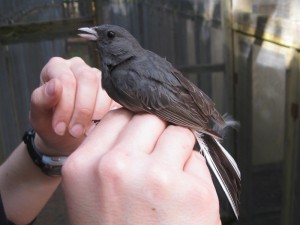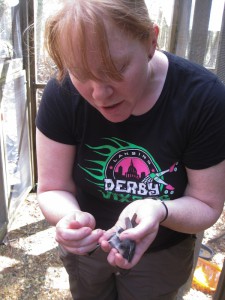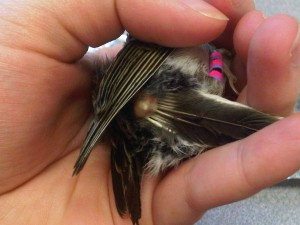The activities are as follows:
- Teacher Guide
- Student activity, Graph Type A, Level 2
- Student activity, Graph Type B, Level 2
- Student activity, Graph Type C, Level 2
- Grading Rubric
- Digital Data Nugget on DataClassroom
Animals collect information about each other and the rest of the world using multiple senses, including sight, sound, and smell. They use this information to decide what to eat, where to live, and who to pick as a mate. Choosing a mate is an important decision that requires a lot of information, such as how healthy a potential partner is, and information about their genes. Mate quality can affect how many offspring an animal has and if their genes will get passed on to the next generation.
Many male birds have brightly colored feathers that are attractive to females. For example, the peacock has bright and elaborate tail feathers that are thought to communicate a male’s quality to the females. Besides using their sense of sight to see feathers, female birds may use their other senses to gather information about potential mates as well. Danielle is a biologist and she wanted to figure out if birds use vision and their other senses, such as smell, to determine the quality of potential mates.
Danielle decided to research how dark-eyed juncos communicate through their sense of sight and smell. Dark-eyed juncos are a type of sparrow. They are not colorful birds like peacocks, but they do have bright white feathers in their tails. Male dark-eyed juncos have more tail-white than females. Danielle thought is possible that females use the amount of white in a male’s tail to determine whether he is a high quality mate. Danielle was also interested in several chemical compounds found in junco preen oil, which birds spread on their feathers. This preen oil contains compounds that give birds their odor. Danielle found that males and females have different odors! Just as males have more white in their tail feathers, they also produce more of a chemical called 2-pentadecanone. Danielle wanted to test whether this chemical functioned as a signal to females of mate quality.
To test her two potential hypotheses, Danielle captured male juncos at Mountain Lake Biological Station in Virginia. She measured the amount of tail-white by estimating the proportion of each tail feather that was white, and adding up the values from each feather. She also took preen oil samples and measured the percent of each sample that was made up of 2-pentadecanone. She followed these birds for one breeding season to find out how many offspring they had. If females pick mates based on visual ornaments, then she predicted males with more tail-white would have more offspring. If females pick mates based on smell, then she predicted males with more 2-pentadecanone would have more offspring.
Featured scientist: Danielle Whittaker from Michigan State University
Flesch–Kincaid Reading Grade Level = 9.4
Additional classroom resources for this Data Nugget:
- To learn more about Danielle’s work with juncos, see her blog posts “The sweet smell of (reproductive) success” and “Deciphering avian aromas” on the BEACON website.
- To learn more about Danielle and her research, check out this episode from the PBS/NOVA web series “The Secret Life of Scientists and Engineers” where she was featured.
- A NYTimes article about Danielle’s recent collaboration with a microbial biologist to determine what creates the junco smell, “The Bacterial Surprise in This Bird’s Smell“.
- There is a scientific paper associated with the data in this Data Nugget. The citation and PDF for the paper is below.
- Whittaker, D., N.M. Gerlach, H.A. Soinic, M.V. Novotnyc, and E.D. Ketterson (2013) Bird odour predicts reproductive success. Animal Behaviour 86(4): 697-703




I teach Animal Behavior, a Junior-Senior level class, in the Biology department at Spelman College.
We used successfully this case study during our section on Mating Behaviors. We used the case study in a 50-minute class-period. The students were highly engaged. We used the opportunity to discuss deeply on how to determine whether a correlation is significant, how to interpret both types coefficient: the Pearson product-moment correlation coefficient (rho) and the coefficient of determination (R^2). The students understood how to determine statistically whether the data would support a correlation. The other aspect was that students were not expecting the visual cue not to correlate. Thus they were exposed to getting a result that did not match their prediction, and were forced to go a little further and think about the causes and describe future experiments.
The last question on the study was done individually, but I think that giving the students the opportunity to discuss it in groups would have been more productive as I got answers that went all over the place.
Finally, it is very well prepared for the instructors. Minimal time put in to prepare the class. Reading the original article allowed me to get some more information and share it with the students that seemed interested in going deeper in the topic.